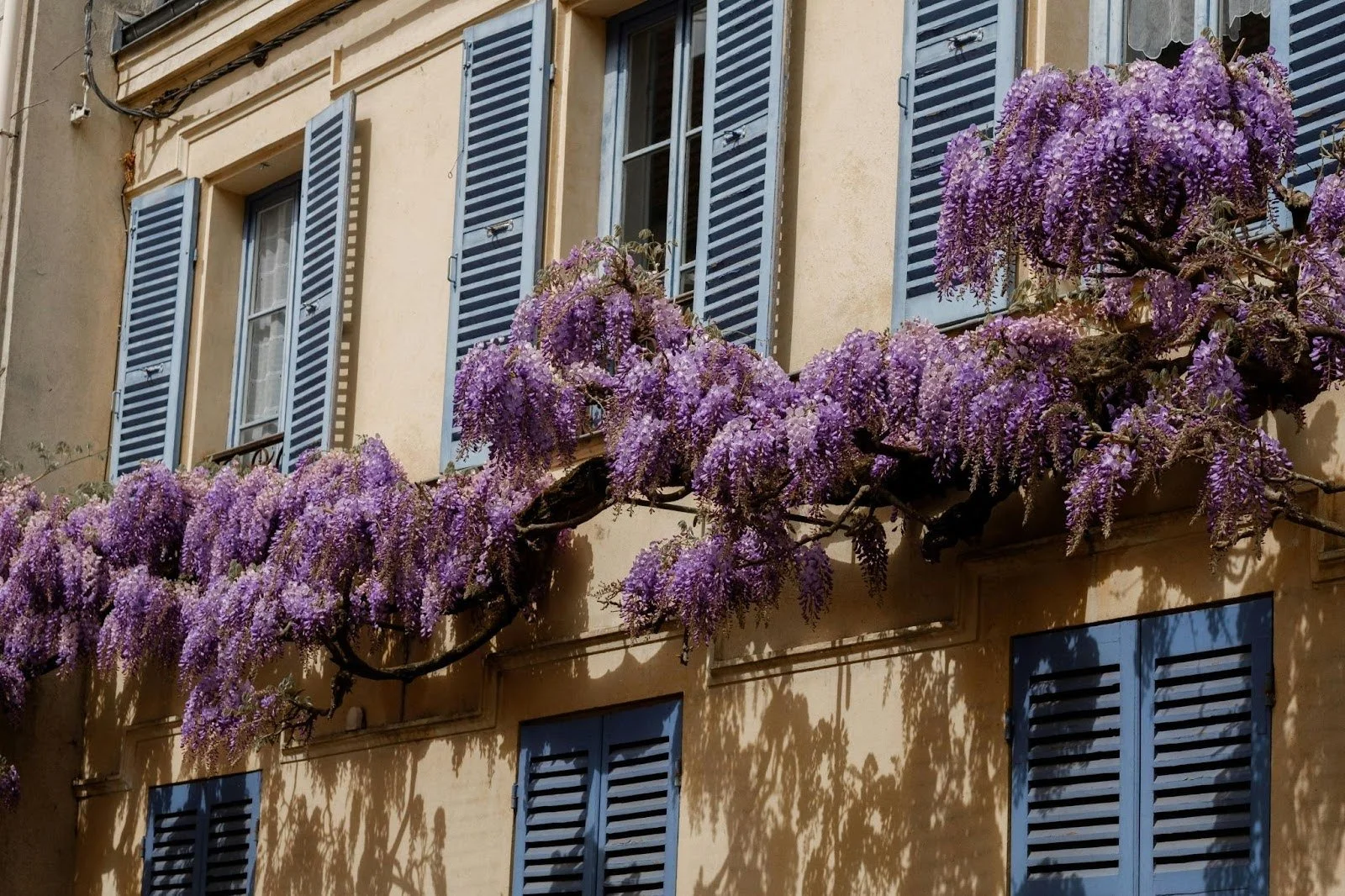Authentic Gratitude: Finding Connection to Joy When it’s Hard
Gratitude is complicated sometimes. Some of us crave it, some of us practice it regularly, some of us hear the word and remember a practice we abandoned, some of us don’t know where to begin at all, and some of us give gratitude a big old eye roll.
This is the place where we make space for all of these points of view. That’s because gratitude isn’t just one thing. While we’ve put together an in-depth guide to crafting your gratitude practice, the truth is, it’s a feeling, and the only thing that matters is that it’s authentic for you.
Your social feeds are probably filled with curated lists, journal prompts, and photo dumps of appreciation this time of year. And while these are all avenues to access gratitude, they aren’t the only way to feel the warmth of seeing aspects of your life with a little bit more presence and love.
Today, we’ll talk about why real gratitude is rarely tied in a perfectly neat bow, and just like any other emotion we experience, it tends to come from the core of who you are. Let’s dive into what moments of authentic gratitude might look like outside of organized practices, how to access them, and the difference between forcing and flowing.
What does authentic gratitude really mean?
Authentic gratitude isn’t about pretending everything is great, but instead noticing what’s true for you. It may be the moment you see the small moments of goodness or connection as you’re working through something complicated. It may be a choice to be still and present with your breath when life is moving quickly around you.
Think of it as a belief that even when you can’t understand why you’re experiencing a certain season of life in the way that you are, you can choose to anchor yourself and hold on to get to the growth on the other side.
Authentic gratitude is rooted in honesty with yourself, and that’s why you don’t need the big declarations or perfect post. It’s also why you can’t always plan it like a ritual or habit. While there may be certain settings or spaces you create that naturally bring out grateful moments, it’s about finding yourself organically drawn to genuine appreciation for a person, pet, moment, thing, or experience.
A few examples of authentic gratitude
“I’m grateful for such a good conversation with a friend who makes me feel safe to open up when I’m naturally introverted.”
“It was a nice moment to taste my coffee this morning and have it be even better than usual.”
“I’m impressed with how resilient I’ve been, even though I’m tired.”
“I appreciate the kindness of my colleague in a meeting I didn’t want to be in that turned my day around.”
“I’m really happy that I have so many people checking in lately when I feel so disconnected from myself.”
“I needed this moment of sunshine coming through the window when it’s been such a low-mood morning.”
“My husband’s patience is really admirable when I’ve been bringing home stress from work every day. I don’t know how he does it.”
These moments might not be life-changing, but they’re real. And that’s what makes them powerful.
The difference between force and flow
Gratitude can lose its meaning when it becomes something we pressure ourselves to feel. The tricky thing is that, just as with many daily habits, we can easily slip into autopilot. Pressure can also come from hearing about gratitude and seeing the way other people bring it into their lives, while skipping the time it takes to align with what resonates most with you.
You might even notice that when life feels heavy or uncertain, forcing gratitude can make you feel worse, kind of like you’re supposed to be thankful instead of honest. We want to look at authentic gratitude as that flow, allowing in moments of tiny appreciation while being honest with ourselves about what other emotions are present and not needing to choose one over the other.
Forced gratitude often comes from our thinking brain. This is the part that wants to check the box, do the “right” thing, and keep it together.
Here’s what that part sounds like:
“I should be grateful. I have so much going for me.”
“Other people have it worse, so I shouldn’t complain.”
“If I solely focus on the positives, I won’t feel this pain.”
But when we push gratitude like that, it stops feeling grounded and starts feeling performative. There’s an opportunity to notice whether gratitude is being used to manage emotions rather than to understand them.
The impact of gratitude that flows
When gratitude is in flow, we’re allowing appreciation to meet us wherever we are even if that’s in a place where it seems hard to see the light at the end of the tunnel. Flow shows up when a thought crosses your mind, something catches your eye, you sense a familiar feeling, or you’re taken by surprise in a way that brings you joy.
You can’t manufacture this type of gratitude, but you can create the right conditions for slowing down and tuning in so there’s room for these moments. That may be a cozy corner or dedicated journal for some, and for others, it may be creating a bit more slowness when you feel the urge to speed up and “get through it.”
Gratitude in flow feels real, not because life is suddenly perfect, but because you’re permitting yourself that it doesn’t have to be for you to smile, laugh, or offer yourself a nice, deep exhale.
Gratitude as a companion to complicated feelings
What we want to avoid is using gratitude to erase or override challenging emotions. Gratitude shouldn’t be a spiritual bypass or a shortcut out of discomfort. Instead, it can be a companion to complicated feelings.
Think of the classic “rose and thorn” exercise: you name a rose (something good) and a thorn (something hard). It’s a simple way of practicing gratitude without pretending everything is fine. Even if you’re engaging in a more intentional or “forced” gratitude practice, you can still make space for the thorns. There’s room for both the beauty and the ache.
This is the heart of flow-based gratitude: allowing both truths to coexist. Letting the gratitude that comes naturally in, and gently working the muscle of noticing goodness when it doesn’t, without asking it to replace or fix anything.
How can I tap into these moments of authenticity?
It’s okay to feel like gratitude doesn’t come easily, and you’re not alone. Humans are wired to protect ourselves, which means our nervous systems are typically looking for potential threats (or what’s wrong) before we notice the good things.
If you don’t naturally pause to soak in the good when things are tough,this could be an opening to practice this new perspective over time. Below, we’ll talk about a few ways you can tap into your authentic gratitude and find what resonates most with you.
1. Start by noticing, without having to fix
It can feel really unnatural to think positively or try to change a bad mood fully because well… that’s hard to do! Instead, can you start to take stock of what’s happening around you and within you with honesty, then create a moment where authentic gratitude might come in more naturally?
For example, you might be feeling like you’re so overcommitted right now that you’re struggling to keep up and make it all work. While trying to tell yourself “I’m just being dramatic it’ll be fine and I just have to keep going” feels like a dismissal of how this is really impacting you, you could instead say something like, “I’m overwhelmed right now, and I’m grateful that I made it through a hectic week.”
2. Bring it back to your senses
The first step to feeling gratitude is to be present with yourself as you start to notice those tiny sensations or moments that are easily missed when we’re constantly in our thinking mind. If you find it hard to tap in because your mind is typically racing or spiraling, a step in the right direction may be grounding through your senses and dropping into presence.
Imagine driving home after a tough conversation, feeling like your mind won’t stop replaying every word you said and thinking about every way this might impact your relationship. Taking a moment to feel your hands on the wheel, the warmth or coolness of your seat, any smells wafting into your nose, or the passing sky and cars around you as you drive can open your awareness even more. That way, you can attune to the emotions present and allow them to be with you, while potentially finding appreciation for taking the time to understand yourself a bit more.
3. Let it be messy
If we can continue emphasizing one thing about authentic gratitude, it’s that trying to make it perfect, consistent, or practiced is not the goal. Gratitude doesn’t always feel peacefully zen or like a profound awakening. Sometimes, it’s about seeing that one glimmer of light shining through what feels like a window full of cracks.
It doesn’t mean ignoring the cracks, but being able to hold honesty and appreciation in the same moment.
Here are a few ways that can look:
Feeling grateful for your job and still exhausted by it.
Appreciating your partner while openly admitting you’re frustrated with them.
Saying “I’m thankful for today,” even though you cried in the shower this morning.
Noticing a sunset while your mind keeps looping on something hard.
Write one line in your gratitude journal after skipping it for a week.
Feeling both heartbreak and gratitude after a loss because you felt a great love.
4. Keep it for yourself first
There’s nothing wrong with sharing our gratitude, especially when it fills us up and we want to let people know how it feels. At the same time, for those who struggle to find gratitude, it might be nice to experience these authentic gratitude moments internally and keep them for a bit to fully feel into the experience.
Naturally, sharing on social media or being prompted on the spot can add pressure to gratitude, which can enter that “force” territory. To keep yourself in flow and practice allowing those moments to come organically, try thinking of small rituals to seal in your gratitude as it hits you.
Some examples might include:
Holding your hand to your heart to let the moment be there just a bit longer
Smiling to yourself as a thought crosses your mind that feels like gratitude
Writing down how you’re feeling if gratitude waves come to you after some time
Looking at yourself in the mirror as an act of self-appreciation
5. Stay curious
You may try these things out and find yourself getting frustrated asking things like, “Why can’t I feel grateful?” or “This stuff doesn’t work for me.” It’s so valid to get in your head about why it’s feeling harder to access gratitude, but it’s also a way to get curious with yourself.
What would happen if you shifted to, “What might be blocking me from noticing good things right now?” Maybe you’re tired, stressed, or just stretched too thin. That awareness alone is a gentle first step toward the presence and tuning in that leads to gratitude. It can be a time to turn toward what you really need most right now and honor that, maybe with appreciation for being able to nurture yourself in this way when it’s not easy.
Why is authentic gratitude important for personal well-being?
Gratitude is a highly researched and supported tool for mental and emotional health when it’s a genuine felt sense that you invite into your life.
Studies show that regularly turning toward gratitude can:
Lower stress and anxiety levels
Improve sleep and emotional regulation
Strengthen relationships
Build resilience in difficult seasons
Help rewire the brain toward noticing what’s working rather than only what’s lacking
When gratitude is forced or inauthentic, it can reduce the likelihood of fully soaking in these benefits, leading to guilt for not feeling grateful “enough” or shame for struggling. Gratitude in flow that comes organically activates parts of the brain linked to empathy and connection. It softens defenses and helps us stay present as we walk through hardship with perspective.
Reflecting on your relationship with gratitude
The goal isn’t to feel grateful all the time, but to start noticing when gratitude naturally shows up, even in small ways. Here are a few reflections to help you explore your relationship to gratitude as you continue to get curious with yourself.
Questions to ponder on
What does gratitude actually feel like in my body when it’s real and not forced?
When was the last time I felt thankful and surprised by it?
What messages have I absorbed about what gratitude “should” look like?
Where do I feel resistance to gratitude?
What small truth feels worth acknowledging right now?
These questions could be great conversation starters or topics at your holiday gatherings that go beyond the typical “what do you feel grateful for?” Authentic gratitude grows in the same uneven and unexpected way we do. When you permit yourself to meet gratitude exactly where you are, it becomes less about doing it “right” and more about being yourself.



